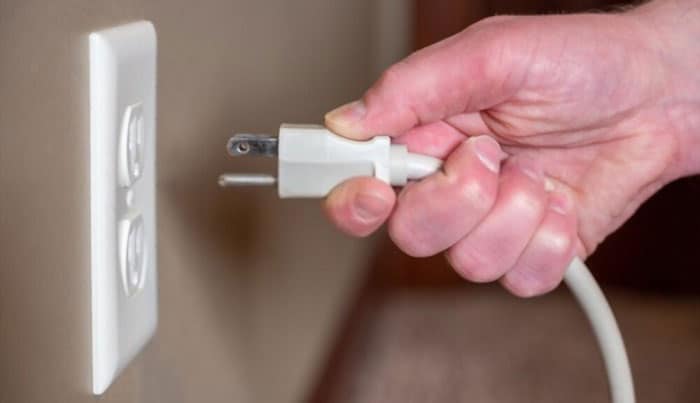Skip to comments.
Who Invented the Power Chord?
Far Out Magazine ^
| Fri 9 February 2024
| Kelly Scanlon
Posted on 02/10/2024 7:41:05 PM PST by nickcarraway
click here to read article
Navigation: use the links below to view more comments.
first previous 1-20, 21-40, 41-57 next last
To: dayglored
Pete Townsend has stated in interviews that if it were not for Link Wray's power chords in "Rumble", he never would have picked up a guitar.
That's a pretty strong influence, IMO. "Up until the point before they released their first single, The Who did not really have any original material to show for. Roger Daltrey, in an interview with Q Magazine, explains why: “We already knew Pete could write songs, but it never seemed a necessity in those days to have your own stuff because there was this wealth of untapped music that we could get hold of from America. But then bands like the Kinks started to make it, and they were probably the biggest influence on us – they were a huge influence on Pete, and he wrote ‘I Can’t Explain’, not as a direct copy, but certainly, it’s very derivative of Kinks music.”"
The Story Behind The Song: How The Who created ‘I Can’t Explain’
21
posted on
02/10/2024 9:21:12 PM PST
by
Dr. Franklin
("A republic, if you can keep it." )
To: nickcarraway
The Who. “I Can See For Miles.” It was nothing *but* power chords, and the song that introduced the sound to an entire generation of aspiring rock guitarists.
22
posted on
02/10/2024 9:22:51 PM PST
by
Flatus I. Maximus
(VOTE BIDEN 2024! Too senile to stand trial but good enough to run the country!)
To: nickcarraway
I just move around until it sounds right.
Mississippi John Hurt
23
posted on
02/10/2024 9:26:46 PM PST
by
ComputerGuy
(Heavily-medicated for your protection)
To: steve86
I listen to a great deal of music. I listen very closely and have created songs for my own amusement, but I’m not a musician per se. I’ve been a visual artist but not a music man. Maybe I was in a previous life. For now? I am not worthy!
To: lee martell
25
posted on
02/10/2024 9:55:03 PM PST
by
Flatus I. Maximus
(VOTE BIDEN 2024! Too senile to stand trial but good enough to run the country!)
To: nickcarraway
“...power chords are played by placing one finger across two or three adjacent strings on the fretboard.”
~~~~~~~~~~~~~~~~~~~~~~
Okay I gotta crank my nitpicker up to 11 for a second...
What he’s describing isn’t a power chord. A textbook power chord uses two fingers on adjacent strings spaced a fret apart. This gives you the root note plus the fifth on top.
When you do the one finger trick across two strings like he describes, you’re playing the fifth plus the root on top. So the notes are sort of flipped. The sound is similar but isn’t technically a power chord IMO.
The riff in Smoke On The Water uses this kind of flipped, quasi power chord. The classic mistake is to play it with true power chords — an easy mistake to make because it’ll sound similar, but it won’t be quite right. Rick Beato actually has an episode about it:
https://www.youtube.com/watch?v=mX0IInspcgg
And if you put one finger across three strings then you’ve got the major third involved which is definitely not a power chord. It’s a major triad. An example of this would be the A chord in Rumble by Link Wray.
To: nickcarraway
Thomas Alva Edison invented the power cord...


...oh...never mind.
On a side note, when Thomas Alva Edison inserted the first power cord into the socket, he got a big shock, and let out a yowling howl, inventing the rock howl, later used by many rock bands in the future, like this one:
"Werewolves Of London" - Warren Zevon
27
posted on
02/10/2024 9:57:56 PM PST
by
Songcraft
( )
To: T.B. Yoits
No wonder I got nowhere trying to learn to play
28
posted on
02/10/2024 10:04:17 PM PST
by
doorgunner69
(When tyranny becomes law, rebellion becomes duty)
To: Songcraft
...But his hair was perfect!
To: lee martell
:-)
30
posted on
02/10/2024 10:13:24 PM PST
by
Songcraft
( )
To: Terabitten
The "first" and "fifth" denotes where that note lies in a given major scale. Be careful not to mix scale degrees and chord intervals.
In a chord, the First (or Root) and the Fifth (an interval of a fifth above the Root), are distinct from the scale degrees.
In the Key of C, C is the first scale degree and G is the fifth scale degree but other chords in the scale can be played as power chords. For example, in the key of C, power chords could be played on:
C - (first scale degree) - power chord played as Root C and fifth interval G.
F - (fourth scale degree) - power chord played as Root F and fifth interval C.
G - (fifth scale degree) - power chord played as Root G and fifth interval D.
and so on...
To: Dr. Franklin
32
posted on
02/10/2024 10:19:18 PM PST
by
dayglored
(Strange Women Lying In Ponds Distributing Swords! Arthur Pendragon in 2024)
To: doorgunner69
No wonder I got nowhere trying to learn to play. It's never too late to start it back up.
I highly recommend 'Theory Notebook Complete' by John Brimhall for those not studying Music Theory as part of a full curriculum and even for those who are studying music theory in school.
https://www.amazon.com/Theory-Notebook-Complete-John-Brimhall/dp/158560755X
The Berklee Music Theory books are also good.
https://www.amazon.com/Berklee-Music-Theory-Book-1/dp/0876391102/ref=sr_1_1?crid=COSWOCCYGFT5&keywords=berklee+music+theory&qid=1707632266&s=books&sprefix=berklee+theory%2Cstripbooks%2C88&sr=1-1
To: steve86
Simplest explanation.
Doe Ray Me Fa Sew La Tea Doe
Doe being the First.
Sew being the Fith.
Play both notes cranked on 11 and you have a power cord.
34
posted on
02/10/2024 10:51:55 PM PST
by
right way right
(May we remain sober over mere men, for God really is our only true hope. )
To: dayglored
Here's that Pete Townshend quote:
https://faroutmagazine.co.uk/the-link-wray-inspired-iggy-pop-pete-townshend-jimmy-page-get-into-music/
And referenced here:
https://www.guitarworld.com/features/link-wray-rumble-legacy
It may well be true, that Wray inspired Townsend to play the guitar, but it is undeniably true that without Dave Davies Obvious influence, Can't Explain would have flopped.
35
posted on
02/10/2024 10:53:32 PM PST
by
Dr. Franklin
("A republic, if you can keep it." )
To: Yardstick
When you do the one finger trick across two strings like he describes, you’re playing the fifth plus the root on top. So the notes are sort of flipped. That's true if the guitar is tuned to standard tuning. For alternate tuning, especially for open-string tuning for slide guitar, since it's tuned to fifths, the Root would be on the "E" string and the Fifth would be on the same fret on the "A" string.
For example, a Power Chord with standard Tuning (E-A-D-G-B-E) at the fifth fret would be:
A D G C E A
A# D# G# C# F A#
B E A D G B
...but with Open or Slide tuning such as Open D (D-A-D-F#-A-D) the same A power chord would be played on the 7th fret of both the "E" and the "A" strings.
G D G B D G
G# D# G# C D# G#
A E A C# E A
Keith Richards in particular like to drop the E string to a D and his power chords were on the same fret across adjacent strings.
To: Chode
(three chord rock&roll...)
Also known as a 1-4-5 progression, and usually with a relative minor chord 🎵🎵🎶🎶🎶🎵🎶
🎸🎸🎸🎸🎸🎸🎸🎸🎸🎸🎸🎸🎸🎸🎸
A substantial number of songs are built around this, in various forms
37
posted on
02/10/2024 11:00:33 PM PST
by
SaveFerris
(Luke 17:28 ... as it was in the Days of Lot; They did Eat, They Drank, They Bought, They Sold ......)
To: T.B. Yoits
True you can do one finger power chords if you use non-standard tuning but that’s a special case. I don’t think that’s what the writer is talking about.
Keith Richards is known for using open G tuning on certain songs and removing the low E string altogether. That is, he plays with only 5 strings.
Drop D tuning where you lower the E string a step lets you do one finger power chords, but I don’t think Keith Richards is known for doing that. Do you know a song where he uses drop D?
To: nickcarraway
39
posted on
02/11/2024 12:27:51 AM PST
by
minnesota_bound
(Need more money to buy everything now)
To: nickcarraway
Of course, it’s not a chord at all since it’s only two notes. It’s an interval.
40
posted on
02/11/2024 2:32:18 AM PST
by
KevinB
(Word for the day: "kakistocracy" - a society governed by its least suitable or competent citizens)
Navigation: use the links below to view more comments.
first previous 1-20, 21-40, 41-57 next last
Disclaimer:
Opinions posted on Free Republic are those of the individual
posters and do not necessarily represent the opinion of Free Republic or its
management. All materials posted herein are protected by copyright law and the
exemption for fair use of copyrighted works.
FreeRepublic.com is powered by software copyright 2000-2008 John Robinson

